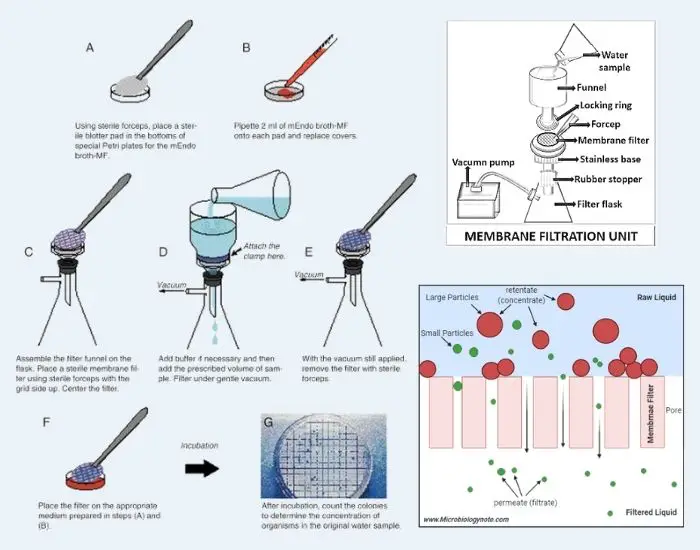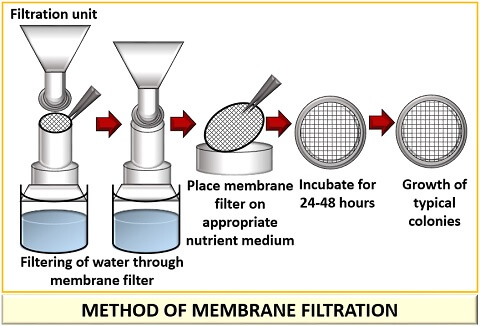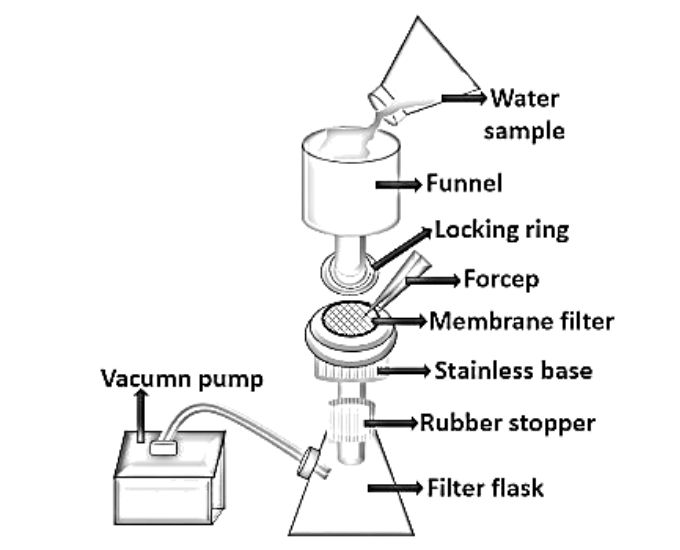Describe the Various Types of Membrane Filters and Their Uses
Diffusion through porous filter membranes typically with 04-µm diameter pores can be used to support different types of culture. Microfiltration MF Ultrafiltration UF Reverse Osmosis and nanofiltration RONF Microfiltration Microfiltration MF is the physical retention of particles behind a filter medium while the liquid they were suspended in passes through the filter.

Membrane Filtration Method Types Advantages Disadvantages Applications
Between 22 nm and 1000 nm.

. Passive Filters Active Filters Response. In industries like pharmaceuticals cosmetics food and beverages etc. They can be employed for online sterilization during injection by placing the membrane between the syringe and needle.
Filtration membranes can be classified into 4 main categories. Gas oil alcohol or bacteria filtration. This process uses an artificial kidney hemodialyzer to remove waste and extra fluid.
Engineering Membrane Filtration Systems Since 1993. There are a wide array of laboratory applications that use membrane filtration processes and for various reasons. Ad Whatman Cytiva GE Healthcare Nuclepore track-etched polycarbonate membrane filters.
The sterilization by filtration can be done by three types of filters like. Compared to bacteria that have a typical size range between 1-10 μm. Still other fluid filters remove water from natural gas.
Reverse osmosis ultrafiltration and nanofiltration all use a membrane in their different filtration processes. Some of the common applications include. Order online or by phone.
Trained Experts Are Ready To Discuss Your Project Needs. Some membrane materials are hydrophobic and do not allow aqueous solutions to pass while some are hydrophilic and designed to let these solutions pass with optimal flow rates. Membrane processes are increasingly used for removal of bacteria microorganisms particulates and natural organic material which can impart color.
All processes except for pervaporation involve no phase change. The operating frequency range of the filter banks on the. Read about what a membrane filter is and how it works inside different systems.
Hemodialysis is the most common type of dialysis. Based On Their Construction. Microfiltration Ultrafiltration Nanofiltration and Reverse Osmosis.
A Organotypic cultures can be used to support long-term culture of tissue slices such as brain usually with an airliquid interface ALI above the tissue to improve gaseous diffusion while nutrient delivery and waste removal occurs through diffusion. Fluid filters are used for removing tramp oils and metals from metalworking coolants. The Four Main Types of Filters Firstly a low-pass filter as the name says attenuates frequencies higher than the set cutoff frequency and allows the frequencies lower than that to pass.
Therefore they both have their individual pros and cons which you may want to consider when using one of these filters for any future project. The cutaneous membrane is skin. Hydraulic filters are usually chosen based on pressure capacity with 100 3000 and 6000 psi being common upper limits.
Viruses range in size between 20-200 nm and are much larger than bacterial cells. The membrane filters are widely used in laboratories for the isolation and separation methods. Ad Stay Within Budget Schedule to Find the Membrane Filtration Solution for Your Plant.
The four types of membranes are. There are three different types of dialysis. Ad We Carry Quality Filter Products For Multiple Industry Applications.
The widely used membrane processes include microfiltration ultrafiltration nanofiltration reverse osmosis electrolysis dialysis electrodialysis gas separation vapor permeation pervaporation membrane distillation and membrane contactors. Microfiltration is commonly used as a pretreatment or clarification step prior to other membrane processes for the removal of fats and large macromolecules. Skin consists of a layer of stratified squamous epithelium epidermis firmly attached to a thick layer of dense connective tissue.
Filter circuit which consists of passive components such as Resistors Capacitors and Inductors is called as Passive Filter. All viruses are 22 nm. The membrane filters are used to monitor the presence of bacteria and to sterilize the heat-labile fluids.
Filter Circuit which consists of active components like Transistors and Op-amps in addition to Resistors and Capacitors is called as Active Filter. Contact Us Today To Learn More. Based On Their Frequency.
Membrane filters act as a barrier to separate contaminants from water or they remove the particles contaminating the water. Particles are retained because they are larger than the pores in the filter. Other fluid filters are used to remove oil from degreasing fluids.
Types of filtration most commonly used include. And 4 synovial membranes. A membrane is a thin layer of semi-permeable material that separates substances when a driving force is applied across the membrane.
These are thin filters that are made of cellulose. Membrane Filtration 1 Membrane Filtration. Viruses are larger and are blocked by sterilizing filters.
Membranes cover protect or separate other structures or tissues in the body. Viruses have a much greater size range.

What Is Membrane Filtration Method Definition Summary Method Biology Reader

Membrane Filtration Method Types Advantages Disadvantages Applications

Comments
Post a Comment